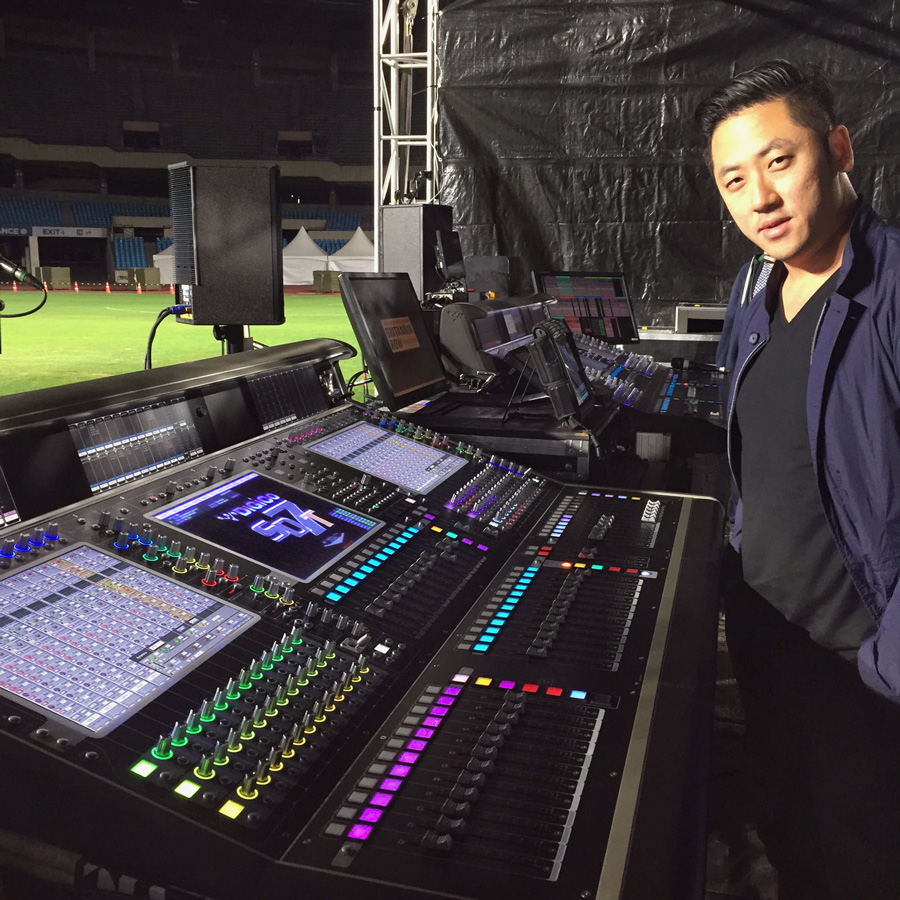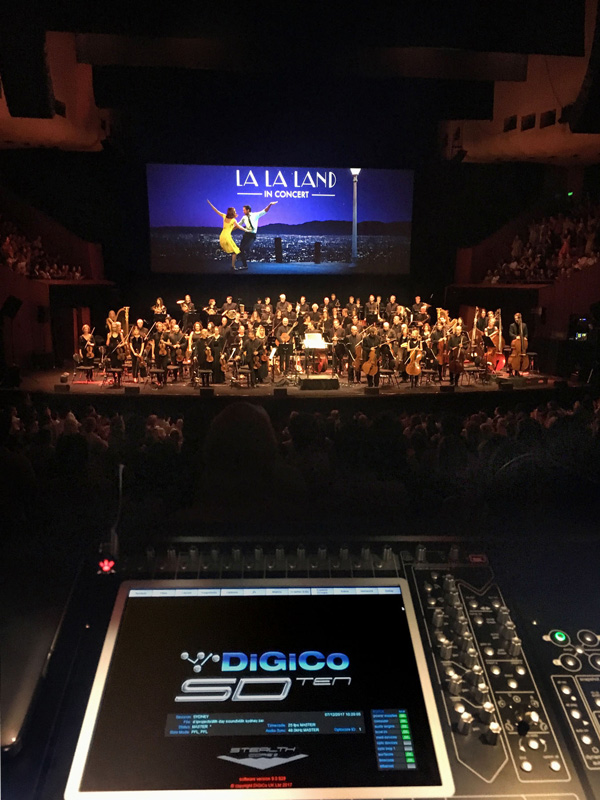SD7 and SD10 consoles are specified by FOH engineer Troy Choi to mix live orchestra, jazz ensemble and choir accompaniment on global trek of film showings. The story of the film La La Land is so unlikely that it almost had to come out of a college dorm room.
Damien Chazelle and Justin Hurwitz were Harvard roomies when they first started working on an idea for a jazz musical about both a struggling musician and an aspiring actress, and it took years to convince someone to finance it.
The surprise hit of 2016 swept the Golden Globes, won six Oscars, and made a net profit of about $65 million. Starting in 2017 and heading into 2018, the film has emerged from the cinemas and hit the road for a series of events known as La La Land in Concert, encompassing screenings of the film that incorporate a live orchestra, jazz ensemble and choir.

The tour’s primary mix engineer, Troy Choi, has been “hands on faders” for 90 percent of the run, including shows on every continent, all using local orchestras and choirs as well as, in most cases, local musicians for the jazz band that is so crucial to the film’s sound and story. And when he has been in the FOH captain’s chair, he has insisted on having a DiGiCo SD7 or SD10 desk in front of him.
“Basically we play the movie from the beginning, the same as a normal movie theatre showing,” says Choi. “However, all of the music from the movie is played by a symphony orchestra, jazz band, and choir, and it’s 100 percent live. The symphony is always a local pickup. Sometimes we travel with Randy Kerber, the piano player who recorded the soundtrack, and he is amazing! This movie’s jazz part is not easy and it’s always great to have the original players.
We actually had the entire original ensemble from the movie soundtrack, including drummer Peter Erskine, bassist Kevin Axt, and guitarist Paul Jackson, Jr., plus Wayne Bergeron on trumpet, Bob Sheppard on sax, and Andy Martin on trombone. But for many reasons, mostly having to do with budget, it has not happened every time.” With pickup musicians in every new city, the ability to get things up and running and sounding good very quickly is crucial. And Choi depends on the exemplary audio quality of the DiGiCo SD-Range consoles to make that happen.
“Most of the time, I mic every single musician, so total channel count is easily between 90 and 100 inputs. And, many times, I don’t have enough time to check and tweak each input individually, so it’s important to have a mixer that always sounds good ‘as is.’ I use SD7s and SD10s, and both of those consoles are ‘gain up, fader up, sounds great with minimal processing.’ The sound is fat, smooth, and never harsh. Many channels run with no EQ changes other than a high-pass filter. That’s helped bring a lot of success to this tour.”

As mentioned, all the music is live. The only recordings are stem files for general dialogue plus sung vocal tracks for stars Ryan Gosling and Emma Stone, some background vocals, which are mixed with the live choir, effects, and a click track to keep everyone in sync. One of the features that Choi depends on to manage all of these inputs is Control Groups of which he uses 24 in total.
“Control Groups mixed with the ability to customize fader layers is crucial to wrangling all of these inputs. I’m a bit of a micro-managing kind of mixer,” Choi says. “So I need to have a pretty significant level of control over workflow. The faders in the center of the SD7 allow me to set up a workflow that makes it super-easy to control all of the Control Groups with.”

Even given that the local pick up orchestras were some of the best in the world, including the Sydney Symphony and Tokyo Philharmonic, each orchestra and conductor has a distinct “vibe” that can change the character of the inputs that Choi is working with. The presence of the jazz band complicated the job further.
“So far, luckily, I’ve been able to work with a great orchestra in every city. The harder task was finding the right jazz band. Every musician involved in this show has said that the jazz parts on the score are very challenging. I once heard Randy Kerber and Wayne Bergeron say, ‘Did we really play this? It’s so hard,’” he laughs.
The challenges go beyond just the music, and the whole character of the music portion—and Choi’s mixing decisions—can change based on myriad influences. “For example, when we did the shows in South Korea with the full band from the soundtrack, I ran the band inputs hotter because the people that came to those shows came to see that band,” he explains.
Other shows outside of the US, where the film was presented with subtitles, wanted to hear more orchestra, while audiences in the English-speaking world may want to hear more dialogue. Choi, who has a background as a drummer and reads music, did the first shows of the tour with a copy of the score next to him to keep track of where they were. “The score has so many musical parts that bleed right into dialogue,” he describes. Eventually, he memorized the score. “For the first gig, I had the score open right in front of the desk. But, by about show 22, I had it memorized.”
Choi points to the SD-Range consoles as a big part of the success of the show. “All of the inputs sound great without a lot of tweaking. That allows me to focus most of my energy and bandwidth on balancing out the orchestra, band and dialogue. Plus the layout and the way I can customize the workflow allows me to be the micro-managing engineer I like to be. And it flat out makes me faster.”
“Plus, I love the multi-band compressors. I can use them on literally every input without external plug-ins, and they help substantially. Sometimes, for example, a violin—even a really well played violin—can sound a little harsh in certain parts of its range. With the SD’s three multi-band compressors, I can tame those harsh high frequencies without losing any warmth or detail in the rest of the instrument’s range. Also every channel has dynamic EQ, which I love!”
While La La Land in Concert is winding down, expect Choi to be behind an SD console on his next gig as well. “No matter what it is: La La Land, pop, hip hop, rock… For me, the best solution, the best answer to many audio challenges is a DiGiCo console.”
More information on Digico Website








